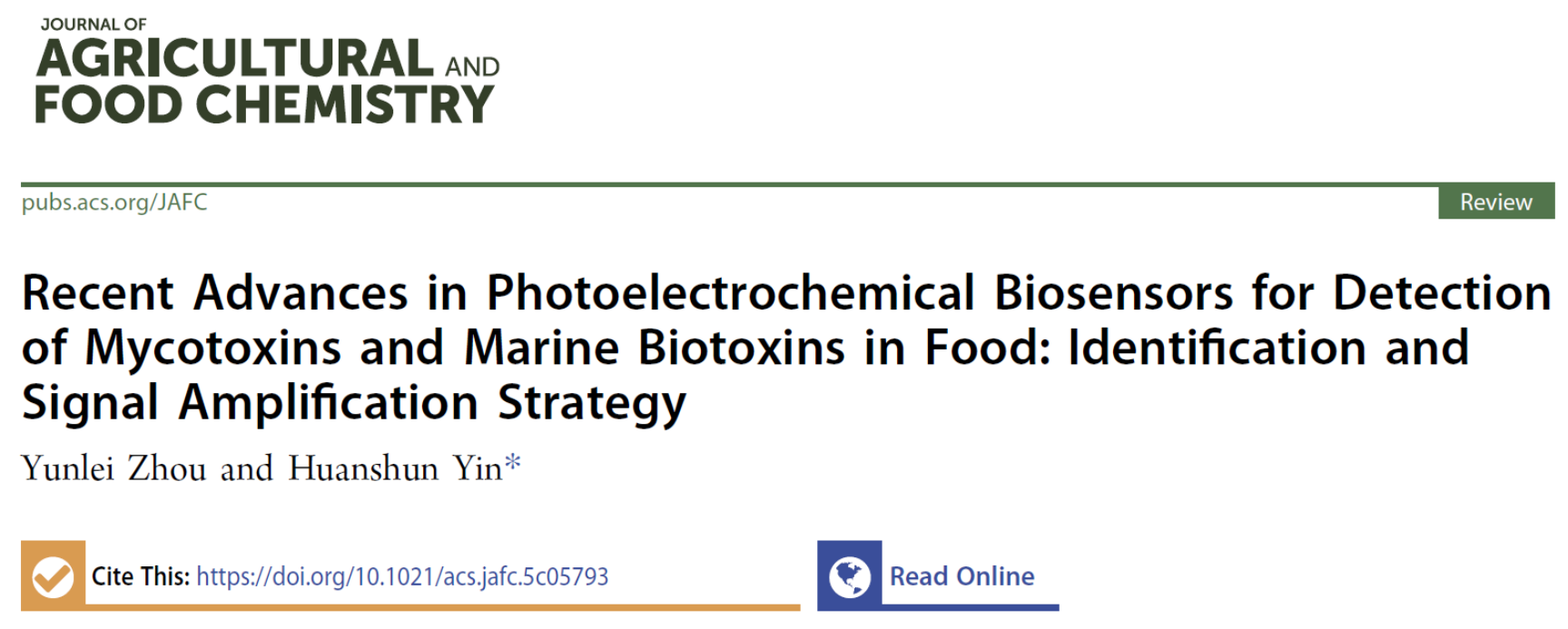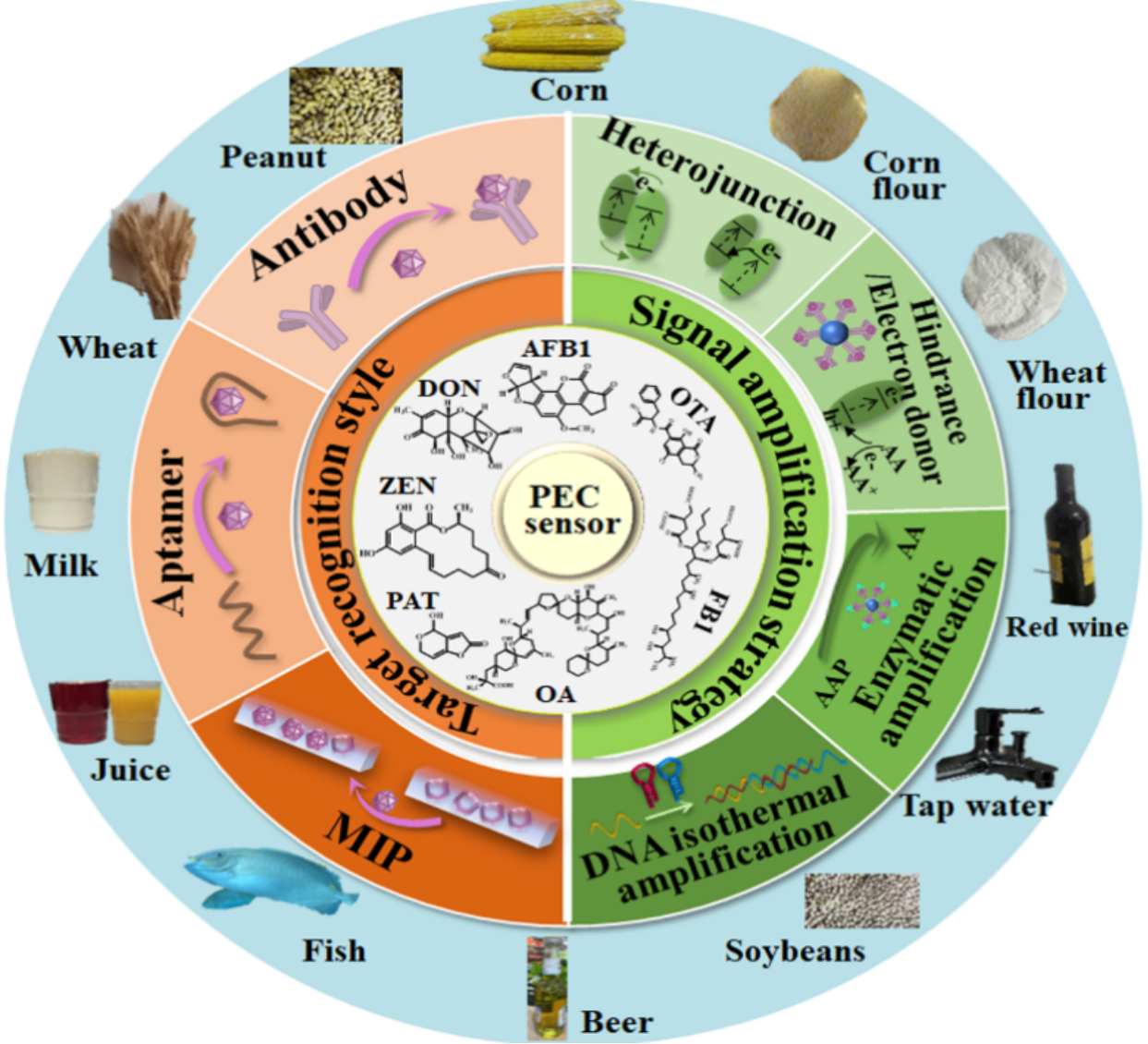
Tianjin University of Science and Technology Makes Progress in Photoelectrochemical Detection of Food Toxins and Marine Toxins
Tianjin University of Science and Technology Makes Progress in Photoelectrochemical Detection of Food Toxins and Marine Toxins
Recently, Professor Yin Huanshun from the Department of Environmental Science, College of Marine and Environmental Sciences, Tianjin University of Science and Technology (TUST), and his collaborator Associate Professor Zhou Yunlei from the College of Bioengineering, jointly published an online review paper titled "Recent Advances in Photoelectrochemical Biosensors for Detection of Mycotoxins and Marine Biotoxins in Food: Identification and Signal Amplification Strategy" in the Journal of Agricultural and Food Chemistry. Associate Professor Zhou Yunlei is the first author, Professor Yin Huanshun is the corresponding author, and Tianjin University of Science and Technology is the sole corresponding unit.

Mycotoxins in food and marine biotoxins pose a serious threat to human health, making the sensitive and specific detection of these toxins particularly crucial. As an emerging analytical detection technology, photoelectrochemical sensors combine electrochemical analysis technology with optical analysis technology. They possess advantages such as low background signals, miniaturized instruments, low detection costs, and high sensitivity, and are currently widely studied and applied in the field of food safety.Based on this, Professor Yin Huanshun and Associate Professor Zhou Yunlei systematically summarized the applications and progress of photoelectrochemical sensors in the detection of food mycotoxins and marine biotoxins over the past decade. From two perspectives—the identification method of target molecules and the signal amplification method of sensors—they reviewed, respectively: the specific recognition of food mycotoxins and marine biotoxins by immuno-recognition, aptamer recognition, and molecularly imprinted recognition technologies; and the promotion of detection sensitivity by signal amplification technologies, including the construction of heterojunction photoactive nanocomposites, as well as the application of electron donors, steric hindrance, enzyme catalysis, and DNA isothermal amplification technologies. Finally, the shortcomings and challenges of current photoelectrochemical biosensors in the detection of food mycotoxins and marine biotoxins were discussed.


